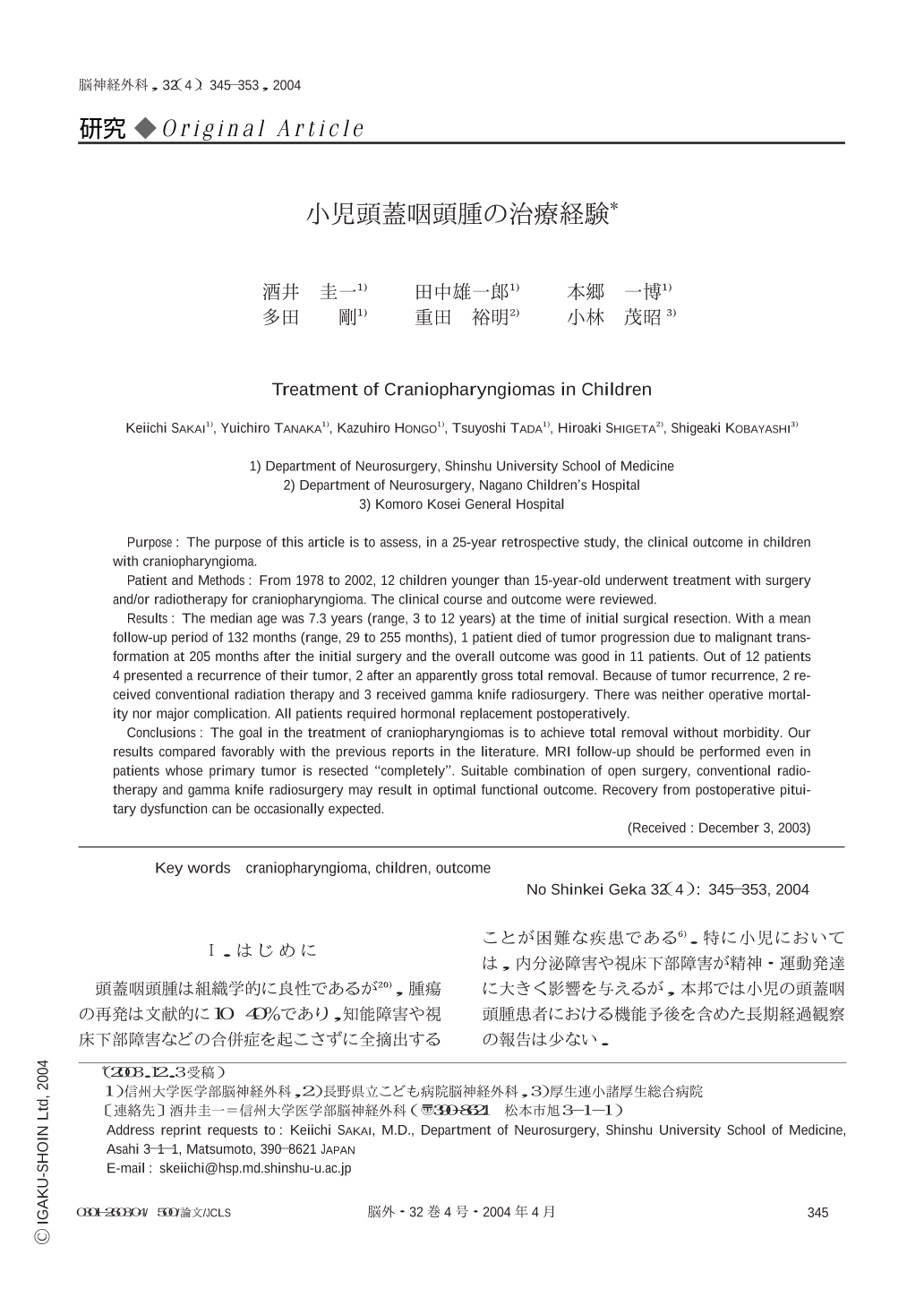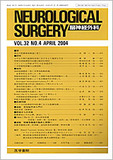Japanese
English
- 有料閲覧
- Abstract 文献概要
- 1ページ目 Look Inside
Ⅰ.はじめに
頭蓋咽頭腫は組織学的に良性であるが20),腫瘍の再発は文献的に10~40%であり,知能障害や視床下部障害などの合併症を起こさずに全摘出することが困難な疾患である6).特に小児においては,内分泌障害や視床下部障害が精神・運動発達に大きく影響を与えるが,本邦では小児の頭蓋咽頭腫患者における機能予後を含めた長期経過観察の報告は少ない.
われわれは,原則として次のような方針で頭蓋咽頭腫を治療してきた.①全摘出をめざすが,重篤な合併症は出さないようにする.②再発例または亜全摘例には再手術もしくは放射線療法を考慮する.このような治療戦略の妥当性を検証するため,われわれが経験した小児頭蓋咽頭腫の臨床経過,治療方法,合併症などを分析した.
Purpose : The purpose of this article is to assess,in a 25-year retrospective study,the clinical outcome in children with craniopharyngioma.
Patient and Methods : From 1978 to 2002,12 children younger than 15-year-old underwent treatment with surgery and/or radiotherapy for craniopharyngioma. The clinical course and outcome were reviewed.
Results : The median age was 7.3 years (range,3 to 12 years) at the time of initial surgical resection. With a mean follow-up period of 132 months (range,29 to 255 months),1 patient died of tumor progression due to malignant transformation at 205 months after the initial surgery and the overall outcome was good in 11 patients. Out of 12 patients 4 presented a recurrence of their tumor,2 after an apparently gross total removal. Because of tumor recurrence,2 received conventional radiation therapy and 3 received gamma knife radiosurgery. There was neither operative mortality nor major complication. All patients required hormonal replacement postoperatively.
Conclusions : The goal in the treatment of craniopharyngiomas is to achieve total removal without morbidity. Our results compared favorably with the previous reports in the literature. MRI follow-up should be performed even in patients whose primary tumor is resected "completely". Suitable combination of open surgery,conventional radiotherapy and gamma knife radiosurgery may result in optimal functional outcome. Recovery from postoperative pituitary dysfunction can be occasionally expected.

Copyright © 2004, Igaku-Shoin Ltd. All rights reserved.


